

 (ማስታወቂያ)
(ማስታወቂያ)
Afewerk Tekle was one of Ethiopia's most iconic artists, leaving behind an impressive legacy of paintings, murals, and sculptures. His works are renowned for their bold colors, intricate designs, and unique perspectives on Ethiopian culture. Through his art, Afewerk sought to capture the essence of Ethiopia and its people. In this article, we will explore the life and legacy of this remarkable artist and discover how his art has impacted generations of Ethiopians.

Afework Tekle was born on October 22, 1932, in Ankober, Shewa Province, Ethiopia, to parents Felekech Yamatawork and Tekle Mamo, and grew up under Italian occupation during WWII. Following the war in 1947, Afewerk decided he wanted to help rebuild Ethiopia and chose to study mining engineering in England. Emperor Haile Selassie addressed Afewerk and other students who were leaving to study abroad before they left. "You must work hard, and when you return, do not tell us what tall buildings you saw in Europe, or what wide streets they have, but make sure you return equipped with the skills and mindset to rebuild Ethiopia." As a child, Afewerk demonstrated artistic talent by decorating several walls in his hometown. This talent was recognized, and encouraged by his teachers at Leighton Park School, an English boarding school. As a result, Afewerk was persuaded to abandon engineering and enroll in London's Central School of Arts and Crafts. He then went on to study painting, sculpture, and architecture at the Slade School of Art. When Afewerk returned to Ethiopia as a university graduate, he could have accepted an assigned ministerial post, but instead chose to spend time traveling around Ethiopia's provinces to gain a better understanding of his native country and culture, which he reflected in his paintings. Upon his return to Ethiopia Afework Tekle was determined to contribute to his country. However, the concept of 'art' was met with a different mindset in Ethiopia than in Europe. He was very aware of how privileged he had been to benefit from many great teachers, both in his country and abroad, and decided to devote his time to creating art and pro-actively campaigning in the name of his subject. However, it was difficult to gain recognition as an honorable person as an artist in Ethiopia, where the concept of ‘art’ was met with a very different mindset to that of Europe. So he decided to exhibit in Africa, Europe, America, and all over the world. He was lucky to have the support of Emperor Haile Selassie, who after watching him put up with a lot of trouble and struggle, asked in wonder, “What is it that makes this little boy stick?”. In 1954, Afewerk Tekle held his first one-man show in Addis Ababa, at Municipality Hall, which provided him with the funds to travel around Europe for two years, learning how to design and construct stained glass windows. He also conducted research on Ethiopian illustrated manuscripts in the British Library, the Bibliothèque Nationale in Paris, and the Vatican Library. Afewerk returned to Ethiopia and established a studio in the National Library of Ethiopia. His growing popularity led to government commissions for murals and mosaics in Addis Ababa’s St. George's Cathedral, and several of his designs were used on national stamps. He was also commissioned to create sculptures of famous Ethiopians, but only the massive Ras Makonnen statue in Harrar was completed. Most notably, in 1958, he created “Total Liberation of Africa”, a stained glass piece in Addis Ababa's Africa Hall of the United Nations Economic Commission for Africa. The three windows cover an area of 150 square meters and represent Africa's sorrow in the past, its struggle in the present, and its hope for the future. Maître Artist Afewerk Tekle played a major role in the development of modern art in Ethiopia. He had a major retrospective in Addis Ababa in 1961, which resulted in his Expressionism-style painting “Maskal Flower”, being shown at international exhibitions in Russia, the United States, and Senegal. Thanks to increased funds, Afewerk was able to travel around Africa. With much of Africa still recovering from colonialism, he became obsessed with black emancipation and independence struggles. This is reflected in his paintings from this period, which has titles such as “Backbones of African Civilization” and “African Unity”. He was the first laureate of the Haile Selassie I Prize for Fine Arts in 1964.
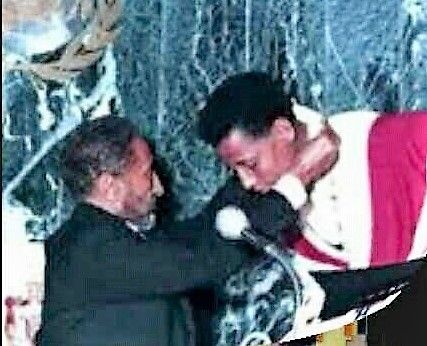
As his reputation grew, Afewerk was invited to put on an exhibition in Moscow, after which he lectured throughout the Soviet Union. The American government responded by inviting one-man shows in Washington D.C. and New York, as well as a lecture tour of American universities. Senegal, Turkey, Zaire, the United Arab Republic, Bulgaria, Munich, Kenya, and Algeria hosted additional international exhibitions. Throughout the 1970s, Afewerk was busy creating murals and mosaics for a variety of public and religious buildings throughout Ethiopia, including the mural “Last Judgement” in Adigrat, Tigray. His painting “Unity Triptych” won the gold medal at the Algiers International Festival in 1977. In the early 1980s, there was a second major exhibition in Moscow, as well as one in Bonn. His painting “Self-portrait” was the first by an African artist to be accepted into the permanent collection of the Uffizi Gallery in Florence, Italy, in 1981. In 1997, he won first prize in the international competition at the Biennale of Aquitaine in France. He was also named Biennale Laureate, earning him membership in the French International Academy of Arts. In 1983, Afewerk Tekle became the first African member of the Russian Academy of Arts. He lived in Addis Ababa, but also had a second home in Hawassa, in the Sidama Region, near Lake Hawassa. His residence in Addis Ababa is called “Vila Alpha” and it is currently a museum. Here is a video of Afewerk Tekle showing this residence. . .
Afewerk Tekle died on April 10, 2012, from severe stomach ulcer complications after being treated at a private hospital in Addis Ababa. He was buried at the Holy Trinity Cathedral cemetery in Addis Ababa. Afewerk's death was widely publicized in the country, and a funeral was planned by a national committee. He is best known for his iconic paintings, which combine traditional Ethiopian motifs with modern techniques. His works have been exhibited around the world, from London and Moscow to Senegal and Algiers, and are considered to be some of the most influential pieces of Ethiopian art in the 20th century. His legacy has been felt in both Ethiopia's artistic and cultural landscape, making him one of the most important figures in Ethiopia as and Africa’s art history.
Afewerk Tekle has left a lasting mark on the world of art. His creative process was unique and inspired many to take up art as a profession. He is best known for his vivid paintings, sculptures, and murals that often depicted Ethiopia's history and culture. Now, let’s explore Afewerk Tekle's creative process as well as some of his most famous works.
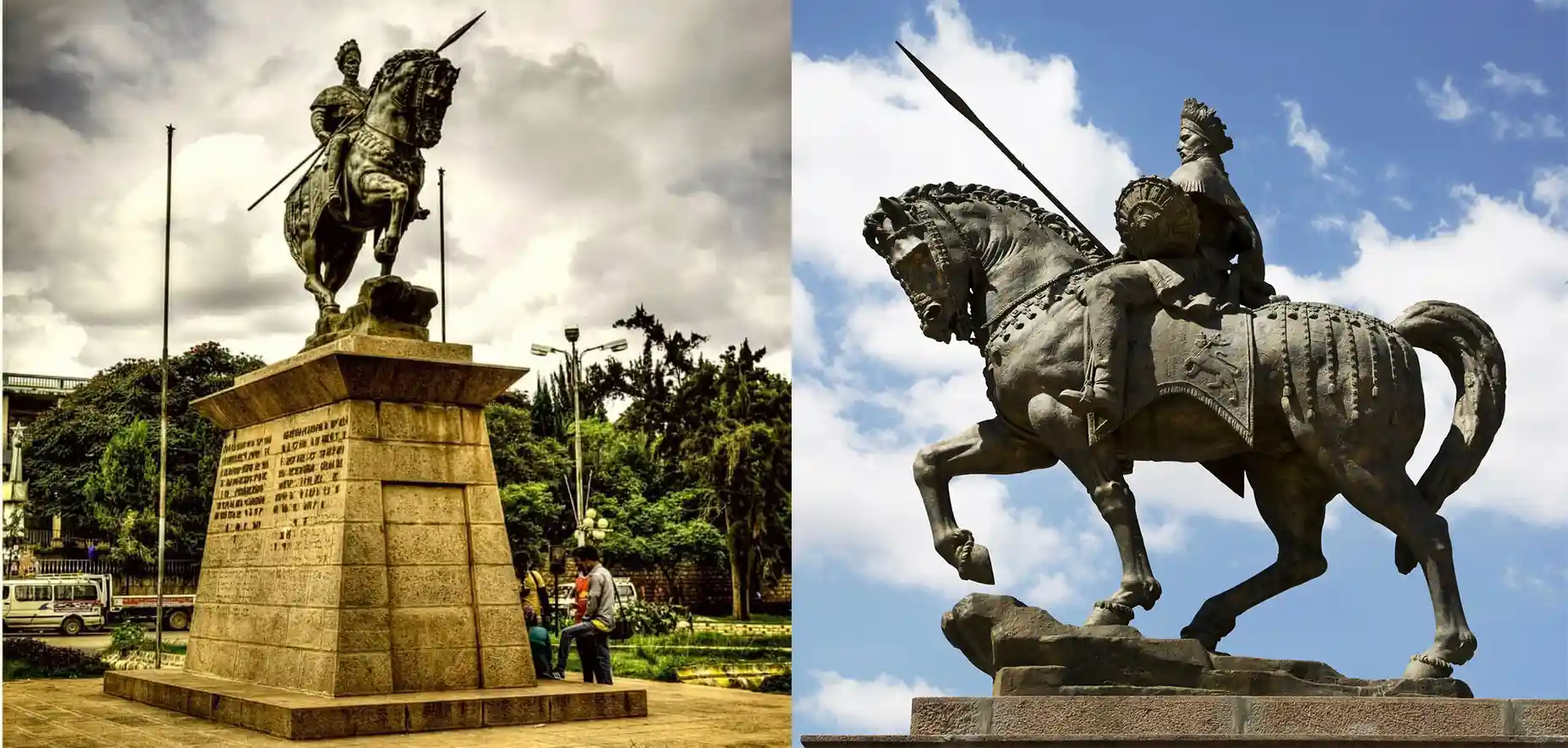
Ras Mekonnen’s Monument was developed by Laureate Afewerk Tekle and Croatian sculptors Antun Augustincic & Frano Krsinic in the mid-1950s. Ras Makonnen was a first cousin of Emperor Menelik II and was a military leader, the governor of Harar province in Ethiopia, and the father of Emperor Haile Selassie. The statue was erected to honor the significance of his contribution to his people and country. Ras Makonnen's statue was placed in Harar, Ethiopia in 1958 and destroyed by hooligans in 2020. Hoodlums and extremists destroyed Ethiopia's national relic due to hatred and animosity based on false Amhara's history.
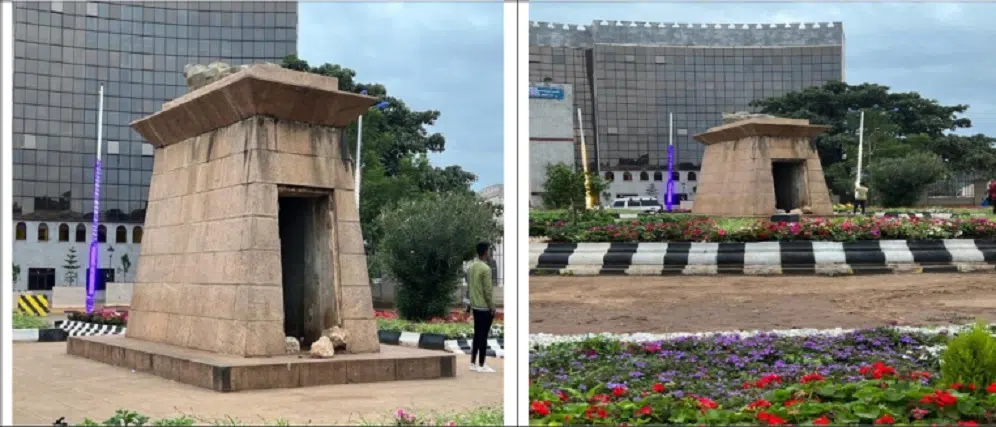
Looking eastward from the Royal Chapel nave, the altar cross is clearly of a design and shape not commonly seen in English churches. It is, in fact, a processional cross made of worked and patterned silver, which Ethiopians are familiar with.
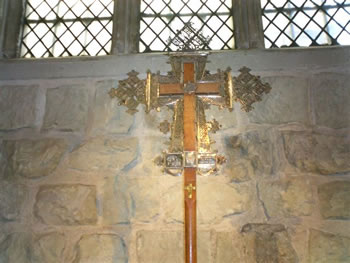
A simple wooden cross can be seen within the silver upon closer inspection. The chapel's archives contain a letter written by artist Afewerk Tekle on January 20, 1967. This demonstrates that he created the cross and was inspired by "the harmonious unity of the two elements (wood and silver). The silver around the wooden cross is inspired by the ancient motifs of Ethiopian crosses, " he adds.
This Piazza St George cathedral is one of Addis' most beautiful churches, commissioned by Emperor Menelik II to commemorate his stunning 1896 defeat of the Italians in Adwa and dedicated to St George (Ethiopia's patron saint), whose icon was carried into the battle. The interior's flashes of color and art easily outshine the grey stone exterior. Sections of the ceiling are sky-blue with gilded stars, and the outer walls of the innermost shrine are covered in Afewerk Tekle's paintings and mosaics.

The above mosaic painting is titled "King Solomon meets the Queen of Sheba. This painting by The Most Honourable World Laureate Maître Artiste Afewerk Tekle hangs In St. George's Cathedral, Addis Ababa, Ethiopia. Orthodox Christians in Ethiopia believe the Biblical Queen of Sheba was a ruler of Ethiopia who visited King Solomon in Jerusalem in ancient Israel. Afewerk Tekle's painting of Solomon and Sheba is one of the greatest biblical paintings of a great artist. It is full of European influences but maintains an element of the Ethiopian style. Tekle draws the viewer's attention to the aesthetic beauty of the king and queen, taking the time to draw the gold trim of Sheba's crown and the precise point of her slippers. He also captures the grand nature of Solomon's reign, using rich vibrant colors to illustrate his extreme wealth. Verse one of Kings chapter ten alludes to the large train of servants that accompany Sheba into Solomon's midst, and Tekle places the King of Israel on a throne above the bustle, illustrating the power and influence of Solomon. The meeting of Sheba and Israel is a metaphor for the peace and general wealth the Israelites enjoyed during the reign of Solomon.
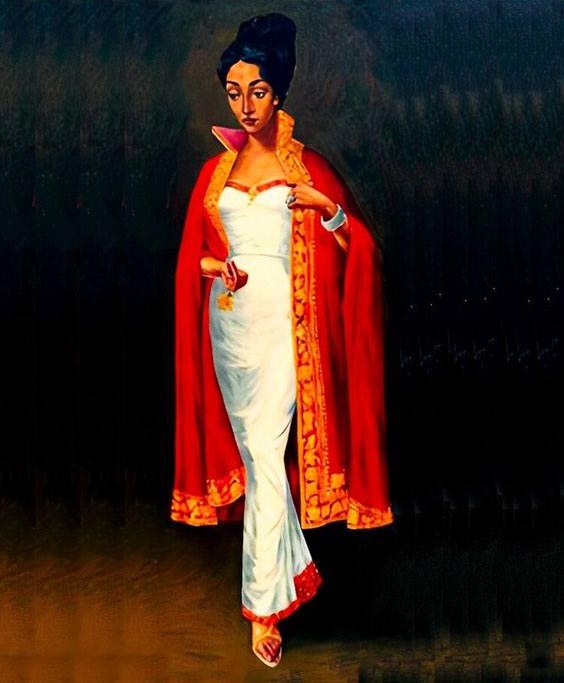
This artwork is titled "Maskal Flower" and was painted in 1959 by the great Artist Afework Tekle. The portrait depicts a lovely lady dressed in traditional Ethiopian attire, holding a maskal flower, which signifies the start of the Ethiopian New Year. At this time of year, yellow flowers grow wild throughout Ethiopia.
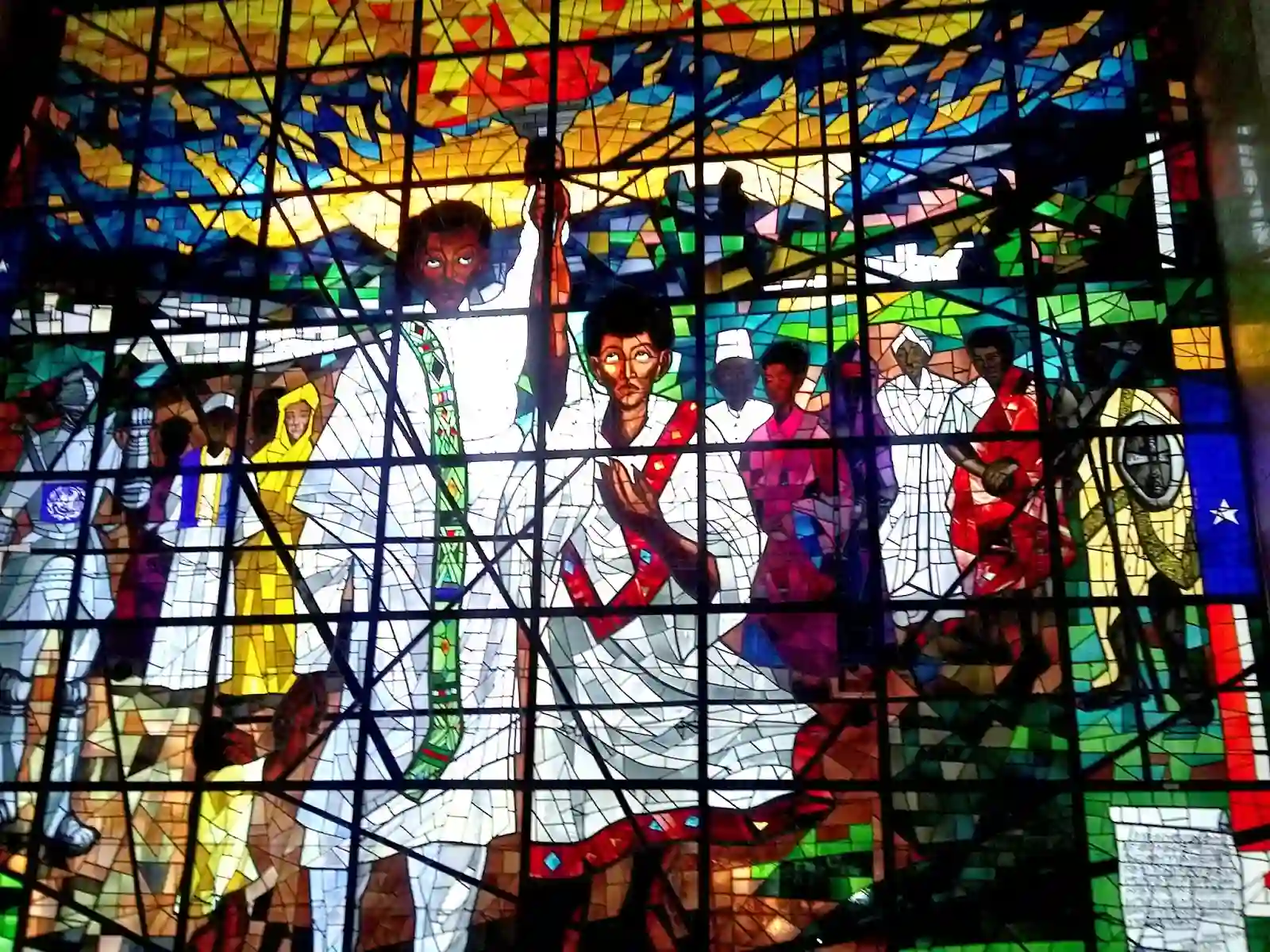
The Organisation of African Unity (OAU) and the United Nations Economic Commission for Africa (ECA) was going to be established. So, every country in Africa was allowed to submit an entry for a window titled 'Africa Then, Africa Then and Now, Africa's Future' (or: 'Africa's Past, Present & Future'). An Italian who was competing with Afewerk Tekle, had depicted a pygmy holding a large book that read 'Education,' a tall Tutsi tribesman holding a small sword that read 'Defence,' and for the central window 'Future,' he showed all the different types of African people, with an emerging sphinx dominating the entire design. Tekle disagreed with this interpretation: the notion that the only thing to remember “was the sphinx, that every other nation in Africa was merely a colony’." Tekle's take on the theme was as follows: He depicted slavery in 'Africa Then,' with the devil dancing over enslaved Africans. For the second window, titled 'Africa Then and Now,' he depicted a map of the continent filled with people, some of whom were already liberated, looking outwards. Others remain in the shadows, with a large red bird flying overhead, symbolizing colonialism. An African man wielding a sword chases the bird away. Finally, for the middle frame, there is a crowd of people, each figure representing a different freed African country, all dressed in their national attire, with an Ethiopian family prominently displayed. The competition day arrived, and Tekle's masterpiece received 14 of the 17 judges' votes. He was declared the winner.
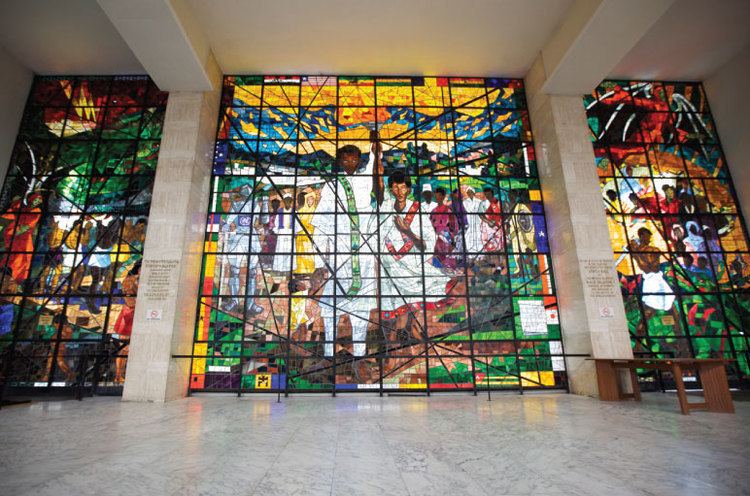
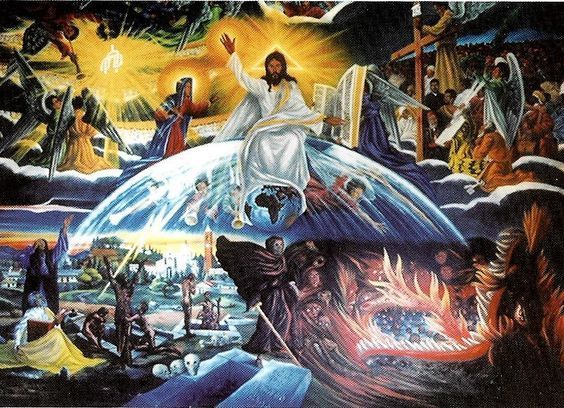
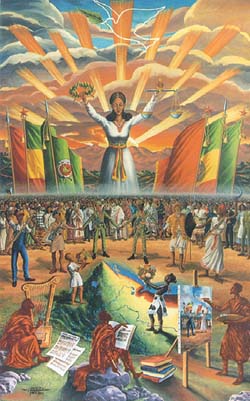
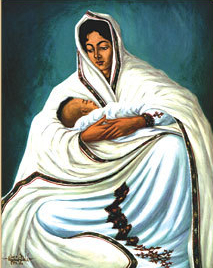
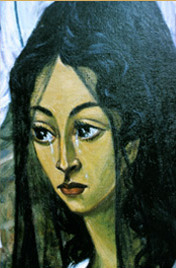
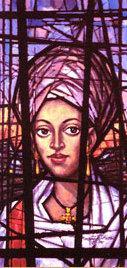
Afewerk Tekle is remembered for his unique style of art. He drew inspiration from the Ethiopian Orthodox faith and its rituals, as well as from other religions, to create his artworks. His works reflect the influence of religion in his life, and how it shaped his artistic vision.
Afewerk Tekle has made a lasting impact on Ethiopia's modern art scene. His unique style of painting, which combines traditional Ethiopian art with contemporary techniques, has made him one of the most influential artists in the country. He is known for his vivid use of color and his ability to capture the beauty and emotion of the Ethiopian landscape. His works have been exhibited in museums around the world, and he has become an icon for young artists in Ethiopia who are looking to make their mark on the modern art scene.
Related articles - Letesenbet Gidey – The new star and face of Ethiopian Athletics - Haile Gebrselassie: The Athlete-Turned Businessman Who Continues to Inspire - 15 Famous Ethiopian artists that sadly died too young - Best Ethiopian Musicians That Got 0 Haters: New Generation - Top 8 Ethiopian-American scientists - 10 successful Ethiopian-Americans in the entertainment industry